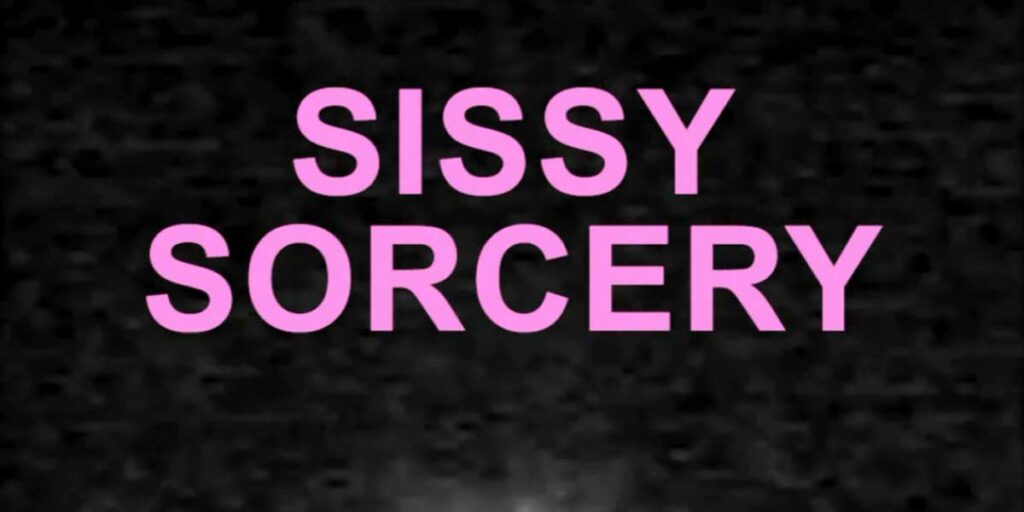Sissy Sorcery is a performance-based piece on transgender intimacy and identity affirmation, reclaiming the representation present in adult movies.
Sissy Sorcery is a 73-minute movie by the ever-inspiring Frances Arpaia, and is a single, pixelated long shot that captures a candle-lit performance by a Madame Lapine. This performance is accompanied by a repeating, text-to-speech reading of an erotic, self-referential poem by Luna de Rave, and a droning piece of music. Madame Lapine’s performance of self-actualisation and gender affirmation (as it is described on Arpaia’s Vimeo page) focuses on an action perhaps easiest to associate with adult movies: the use of sex toys for self-pleasure. Sissy Sorcery is, then, a more explicit example, alongside Arpaia’s previous output (especially her YouTube series, “Two Trans Girls Kissing for Ten Hours”), and Elaine Fuentes’ and Jane Brown’s recent Necessity: Transgender Kiss (for instance), of cinema that presents transgender intimacy for the sake of doing so.
These movies (among others, I’m sure) capture transgender intimacy because they feel that the representation and the exhibition of said intimacy is currently experiencing, and has experienced, a severe deficit. Because perhaps that’s the process. Perhaps when a handful of unique artists don’t see themselves and each other in the movies, they simply (but eagerly, despite the up-hill battle) go about putting themselves and each other in the movies. Then, perhaps, having successfully entered imagery of transgender intimacy into cinema’s subconscious, that imagery grows and develops to the point where a scene of two trans people making out no longer has to be viewed as being fetishistic, or confrontational, or exploitative, or any other restrictive adjective, but can be simply – viewed. Perhaps, perhaps, perhaps…
Frances Arpaia’s approach to this filmic contribution is one I admire: the employ of structuralist techniques in a movie focussed solely on its own reason for existing. With the obscured view, the repeating audio, and the permanently still composition of Sissy Sorcery, the audience is always aware that they are watching a movie. Here, there is none of the being ‘lost’ (or, frankly, thoughtless) that dominant cinema so often strives for. Whereas with structuralist cinema this forced perception would result in the object of the movie being its own process of creation (for the exploration of said process is its reason for being made), with Sissy Sorcery it results in the object of the movie being transgender intimacy (for the record of said intimacy is its reason for being made).

I admire this approach because I appreciate and enjoy the movie’s resulting self-assurance. What better way to enter transgender intimacy into the corridors of cinema than via a movie that is impossible to watch without being aware that that is exactly what you are watching? Beyond this however, Sissy Sorcery also accomplishes something else: a little reclamation. Firstly, the slur-starting-with-an-f is used several times in Luna de Rave’s poem. Which, as a person with an identity repressed enough to have never been targeted by such language, I’m all for. The repurposing of hateful words for our own creative expressions and self-affirmations? I like that idea. Secondly (but primarily), the refiguring of that oppressive corner of internet pornography known as sissy hypnosis.
The title of Sissy Sorcery evokes this corner, the movie’s length and lack of editing opposes its stylistic features, and the self-referential nature of both poem and performance subverts its Othering of transgender people. Sissy Sorcery strikes me, then, as being a precedent-setter on how we might be able to acknowledge the transgender presence in adult movies whilst repurposing this particular sub-genre’s more venomous techniques and intentions for a less predatory objective. And that’s not to mention how, all the while, Sissy Sorcery also maintains the contemporary cinematic partnership between witchcraft iconography and feminine exploration. This movie then, for me of course, certainly achieves a lot with a single 73-minute video recording and two audio tracks. My hat is again off to Frances Arpaia.
Sissy Sorcery is now available to watch on Frances Arpaia’s Vimeo channel.

